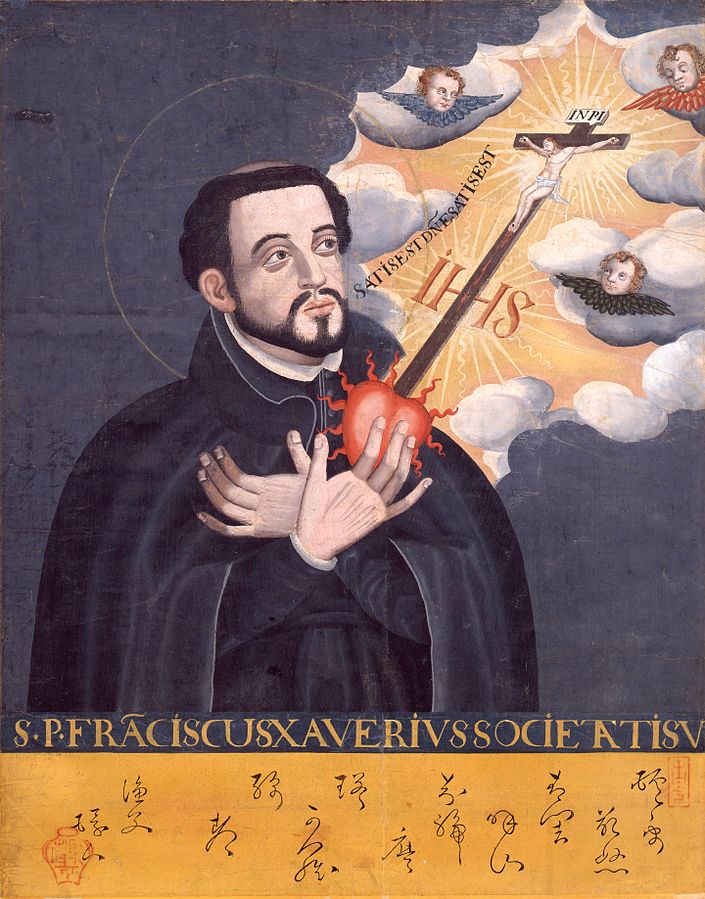The masters who came from India
How Jesuit Missionaries in China and Japan were mistaken for Buddhist sages

17th century painting of St. Francis Xavier, the pioneer of the Jesuit missions in Asia, with his name written below in Latin and Japanese characters. The saint was the first, but not the only, Jesuit in the East to be mistaken for a Buddhist teacher. Image from wikimedia.org
While in the province of Yamaguchi, Japan, in 1549, Francis Xavier encountered monks who followed Shingon Buddhism. They believed he was a master sent to teach new interpretations of Buddha’s teachings. This misunderstanding arose because Francis Xavier, likely following the advice of Yajiro, a Japanese convert to Christianity, had used the term "Dainichi" to refer to the Christian God—a word that actually referred to Vairocana, a primordial form of Buddha. Similar misunderstandings occurred in the 1580s with the first Jesuits in China. Following the guidance of Alessandro Valignano, they dressed and styled themselves like Buddhist monks. As a result, dozens of monks gathered around them, likely understanding little of the Christian message but being captivated by these "exotic" figures. This was partly because devotional images, rosaries, and the concept of salvation seemed familiar to Buddhists. Moreover, the Jesuit Michele Ruggieri identified himself as "Seng," a term denoting membership in the Buddhist monastic community, and used other Buddhist terms to explain Christian doctrine. In 1589, Chinese authorities even offered the Jesuits Matteo Ricci and Manuel de Almeida the chance to stay at the Buddhist monastery of Nahua, thinking it would be an ideal place for them. Ricci not only refused but also expressed disdain for the monks and their moral corruption, surprising the Chinese lieutenant, who believed the Jesuits were Buddhist religious figures. In both cases, confusion was compounded by the fact that the missionaries had declared they were from India, the land from which Buddhism had arrived, as they had all passed through there before reaching Japan and China. The missionaries soon realized that they had nothing to do with Buddhism. Francis Xavier began using the term "Deusi," a transliteration of the Latin word "Deus," and Matteo Ricci distanced himself from the image of a monk, instead adopting that of a scholar, which attracted the Chinese Confucian elites.
Book: Michela Fontana, Matteo Ricci: una gesuita alla corte dei Ming , Mondadori, 2017
Book: Ronnie Po-chia Hsia, A Companion to the Early Modern Global Catholic Missions , Brill, 2018
2025-07-28
Salvatore Ciccarello
